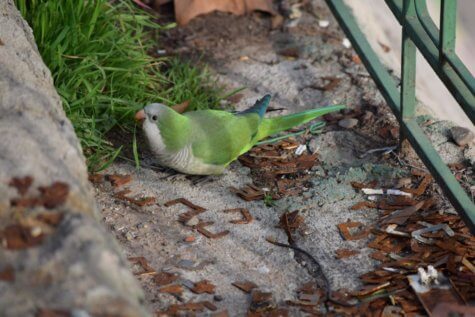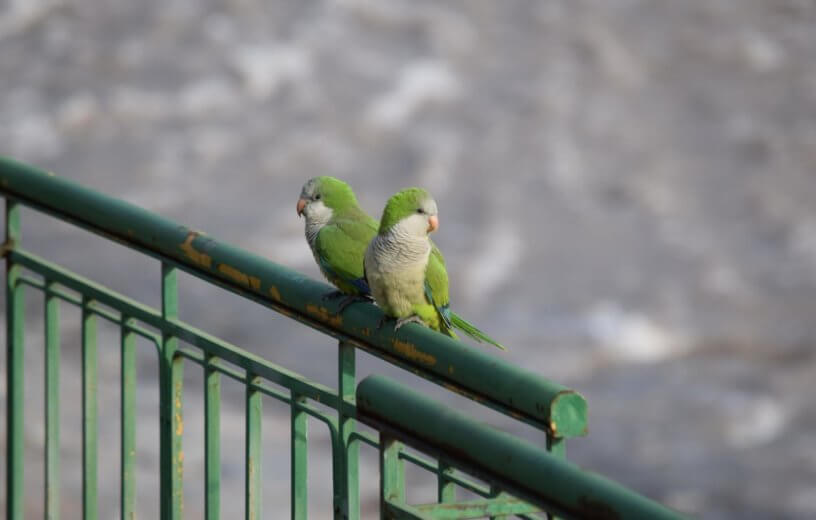CHICAGO — When a pet parrot flies away, many owners fear their escape will spell the end for the beloved bird, believing it won’t be able to make it in the wild. But it turns out not only are parrots surviving, they’re thriving. A new study by researchers at the University of Chicago found that 56 species of parrot — none of which are native to the United States — have been spotted in the wild in 43 states. And incredibly, of those species, nearly half have reportedly been breeding in 23 states.
Reports of parrot species spotted living free of captivity and breeding in the U.S. have been occurring for years. Monk parakeets were known to live and breed in a colony in Chicago’s own Hyde Park neighborhood in the 1960s, after a pet bird craze led to the import of thousands from South America. Many escaped their homes or were released by their owners into the concrete jungle, eventually breeding in at least 10 states by 1968.

Dr. Stephen Pruett-Jones, an ornithologist who primarily focuses on wrens and other wild birds in Australia, routinely saw a monk parakeet colony on his way to work at the University of Chicago and decided to organize a lab project to count them and other parrot species in the country.
“Many of them were escaped pets, or their owners released them because they couldn’t train them or they made too much noise — all the reasons people let pets go,” explains Pruett-Jones in a statement. “But many of these species are perfectly happy living here and they’ve established populations. Wild parrots are here to stay.”
Pruett-Jones and his team used two databases of bird sightings to track naturalized parrot species from 2002 through 2016. First, they turned to the Christmas Bird Count, an annual survey by the National Audubon Society that captures a snapshot of birds in the U.S. during a two-week time period between December 14th and January 15th. The second database is called eBird, in which bird watchers can log online all the bird sightings they come across.
Of the 56 parrot species found living in the U.S., 25 species were determined to be breeding in 23 different states.
Researchers found that the most common parrot species living in the U.S. were the monk parakeets, the Red-crowned Amazon, and the Nanday Parakeet. Most of the birds are concentrated in the warmer climates of Florida, Texas, and California. There are significant populations also in and around large cities like New York and Chicago. The researchers estimate that there are more Red-crowned Amazons living in California now than in their original habitats in Mexico.
And while many of these birds are now thriving, the only two native parrot species to the U.S. — the Carolina parakeet and the thick-billed parrot — are no more. The Carolina parakeet went extinct, and the thick-billed parrot was driven out of the country.
Though at one time there were about 400 monk parakeets living in the U.S., the number is believed to only be around 30 today, with the largest colony found under the Skyway bridge connecting Illinois to Indiana. Researchers say there appears to be a decline in the overall bird population in the U.S., giving bird fanatics and animal advocates even more reason to protect these “escapees” from harm.
“Because of human activity transporting these birds for our own pleasure, we have inadvertently created populations elsewhere,” says Pruett-Jones. “Now for some of these parrots, they may become critical to the survival of the species.”
The study is published in the Journal of Ornithology.
